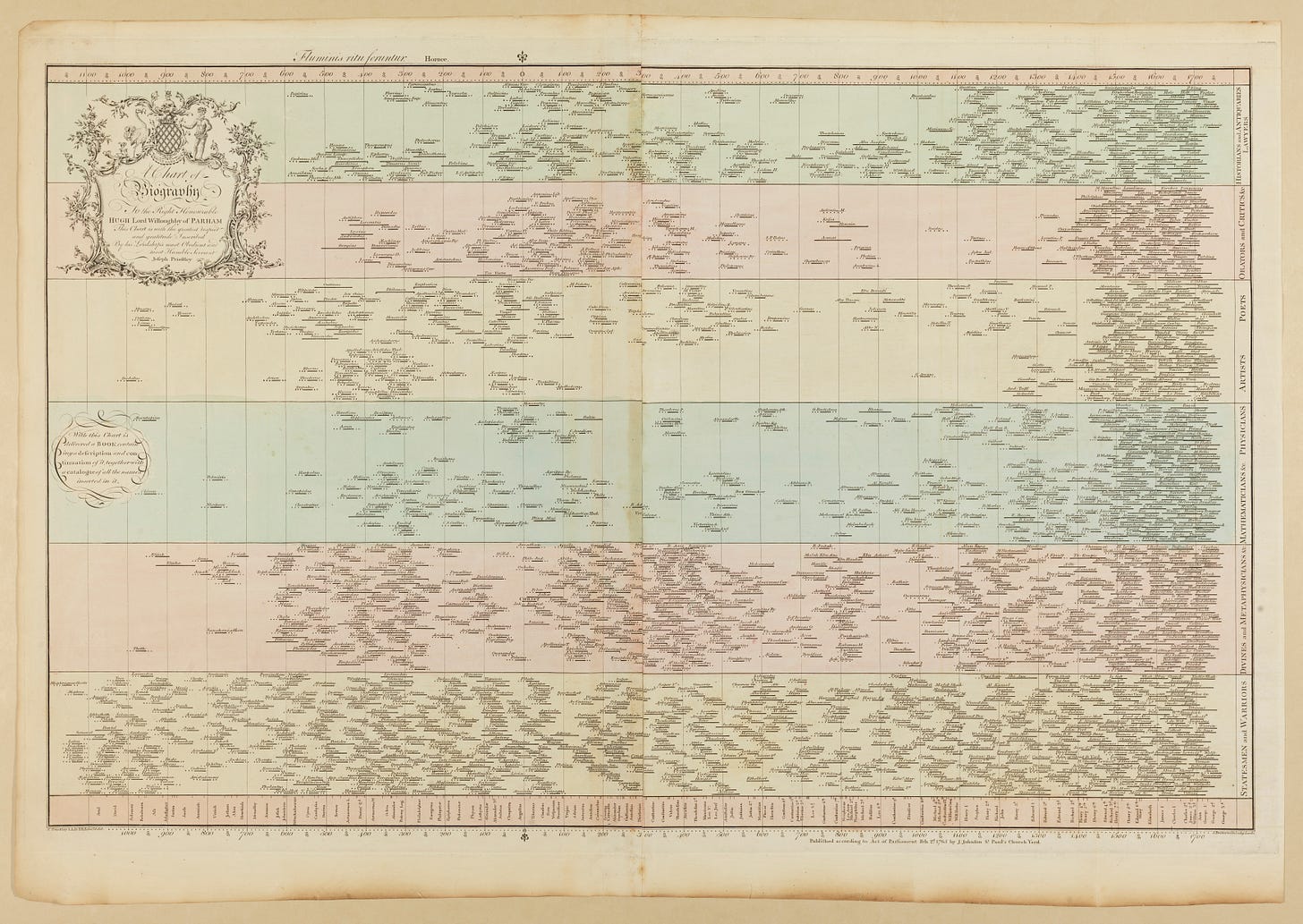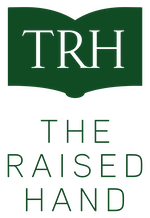Christine Rosen is a senior fellow at the American Enterprise Institute. Her most recent book is The Extinction of Experience: Being Human in a Disembodied World.
When asked what every university and college student needs to learn, it is tempting to offer a list of Great Books that have disappeared from higher education and from the minds of today’s students.
Such efforts to reanimate traditional curricula remain crucial, as do efforts by educators to revive centers for civic education that take as their core value educating students in the texts and virtues of Western civilization.
I offer a modest proposal that would, in practice, complement and strengthen such efforts, but that is also valuable for its own sake: Students need to learn to think chronologically, and to leave school with a coherent narrative of their nation’s past. They need a better understanding of time and a more consistent understanding of cause and effect in major historical events, both of which contribute to the cultivation of a shared reality in the present.
Without a stable sense of the past and a shared present reality, young Americans are unmoored. The fact that most young people spend more than seven hours a day staring at a screen and getting most of their information from online platforms rather than real-world interactions means they are not grounded in time and place, but in the more evanescent experience of “always-on” presentism that cyberspace cultivates. This, combined with a poor grounding in the facts of history, does not a healthy citizenry make.
The problem begins in K-12 education. The National Assessment of Education Progress (NAEP) scores for students’ proficiency in history are dismal. In 2022, the last year NAEP tested students in eighth grade for their knowledge of history: Forty percent of students scored below the NAEP Basic level in U.S. history, a larger percentage compared to 2018 scores. This means many students who graduate from high school and go to college now arrive on campus with little knowledge of their country’s past.
Of course, complaints about the lack of American students’ historical knowledge are themselves nothing new. A front-page article in the New York Times in 1943 lamented, “Ignorance of U.S. History Shown by College Freshman,” and noted students’ “striking ignorance of even the most elementary aspects of United States history.” A “large majority” could not even identify “Abraham Lincoln, Thomas Jefferson, Andrew Jackson or Theodore Roosevelt, and they had little conception of the significant trends that have made the United States the nation it is today.”
The teaching of history, often folded under the broader label of “civics” or “social studies,” also suffers in a world where future “skilled workers” are expected to be fluent in many more science and technology-oriented subjects. History, like much of the humanities, is not considered relevant in such a world and becomes an option, not a priority.
A further challenge: when history is given its due, it is too often taught in a way that undermines chronological thinking and historical reasoning. The trend of the past several decades is to teach history as a collection of themes rather than a chronological march of events; why force students to memorize dates and names and wars and presidents when they have instant access to most facts on the smartphones they carry with them all day?
Alas, information is not knowledge, and access to data not the same as cultivating understanding of what it means. It can too quickly become a form of relevance-mongering, where snippets about the past are used to encourage connections to present crises. This ends up yielding a cherry-picked view of history that is not an aid to understanding.

More recently, teaching history thematically has also introduced a more pernicious practice of teaching history through the lens of identity. This produces students who have read a great deal of historical fiction about slavery, for example, but few skills for placing that history in its national and global context. In the most extreme cases, such as the popular but deeply flawed “1619 Project,” it has produced an ideologically-driven view of the past in service of present political goals. This approach has been controversial for good reason: –it does a disservice to students by promoting a manipulated and deeply pessimistic vision of their country’s founding.
How, then, to restore in students not only a healthier sense of time and place, but a desire to understand the past on its own terms without dragging it into today’s political fracas?
We must find a better way to teach the past that can draw on important themes without losing the chronological thread. Humans think in stories and we are pattern-seeking creatures, but the way we have been teaching history more closely resembles training in apophenia—trying to find connections between unrelated things—than in historical knowledge. No wonder our era, aided and abetted by new forms of media, has witnessed an explosion in conspiratorial thinking. History should be taught in such a way that emphasizes time and place as concrete things; this encourages thinking historically as opposed to the presentist, reactionary style of thinking so prevalent today.
The screen and the digital world to which it is a portal are, for too many young people, their major character-forming institutions. By contrast, chronological grounding in the past, combined with intensive study of the documents and artifacts that have survived that past, offer a qualitatively different way for students to understand the motivations and behavior of people very much unlike themselves, but to whom they are connected. In opening up this vista of wisdom and knowledge so foreign to how the digital world operates, chronological grounding becomes not just another, but a countervailing source of character formation.
Ideally, history taught in this way yields better informed citizens with knowledge and shared memories of common experiences. It also cultivates humility; having the long view of the world helps you see your place in it.
History should also teach the specifics about what it meant to be human in previous eras. In a modern world that traffics in abstractions and algorithms, this is even more important. The detailed facts of how people in the past lived, what they thought and wrote, and why they made the choices they did, ground today’s students in the physical, corporeal world that is often only an afterthought in the minds of those who spend most of their waking hours in digital spaces.
History is also our most powerful means for understanding change, the warp and woof of human civilization. It teaches students why some things endure (the reputations of great men such as George Washington and Abraham Lincoln) and other ideas (Manifest Destiny) arose and fell, and rose again when they did. It describes the formation of the collective memories that our national holidays are meant to stir. It teaches us why we should revere our founding documents and the genius of the system of government they describe, even as we understand why we have at time chosen to amend them.
For twenty-first century American students, it might seem like such specifics have little relevance in their globalized world. In fact, knowing one’s history provides a sense of stability, and for the young, who are naturally wont to see the world with themselves at its center, a reminder that people in the past faced similar and sometimes even greater challenges and found ways to endure.
This is different from relevance-mongering or presentist thinking. It is the provision of intellectual scaffolding upon which students can build an understanding of their world, while also gaining knowledge of historical causality, persistence and change. What has endured? What has disappeared? How have we as a nation interacted with other peoples and nations? Taught thematically, such questions are perplexing to students, but with a grounding in chronology, it is possible to locate patterns and persistent values; to understand the importance of leadership or its absence; and to see in the choices made by those in the past the reflection of a common humanity.
This requires grounding in excellent books and seminal original texts, of course, but more importantly, it requires the cultivation of a certain sensibility about the past. Describing Abraham Lincoln’s greatest speeches, political scientist Diana Schaub argued that it was “significant that Lincoln himself sought to understand the United States through its chronological milestones.” This understanding is reflected in his greatest public speeches, particularly his speech to the Young Men’s Lyceum in Springfield in 1838 and the Gettysburg Address in 1863. In both speeches can be seen the influence of the two books he knew most intimately (as they were among the few which his family owned): The Bible, and the works of William Shakespeare. In both speeches we also see Lincoln’s deep understanding of change and consistency, of time and place. Lincoln understood the power of history as a form of storytelling – and of its importance in helping each generation understand the nation’s virtues and its sins, and those of its people.
Next year is the 250th anniversary of the American colonies’ declaration of independence from Great Britain. Today we live in a culture, aided and abetted by technology, that declares itself free of the bonds of time and place, and independent of the burden of the past. History is a necessary antidote to this way of living, because without a sense of time and place, students face a great challenge in understanding and cultivating the nation’s enduring values.
The Raised Hand is a project of the Consortium of Christian Study Centers and serves its mission to catalyze and empower thoughtful Christian presence and practice at colleges and universities around the world, in service of the common good. To learn more visit cscmovement.org.





“In the most extreme cases, such as the popular but deeply flawed “1619 Project,” it has produced an ideologically-driven view of the past in service of present political goals.” I’d be interested to hear more of your critique here.
A thought-provoking essay! Reminds me of Alan Jacobs' proposed "school for scale": https://hedgehogreview.com/web-features/thr/posts/the-school-for-scale. I'd be curious to see what teaching for a sense of chronology looks like in action--probably something I could learn from myself!